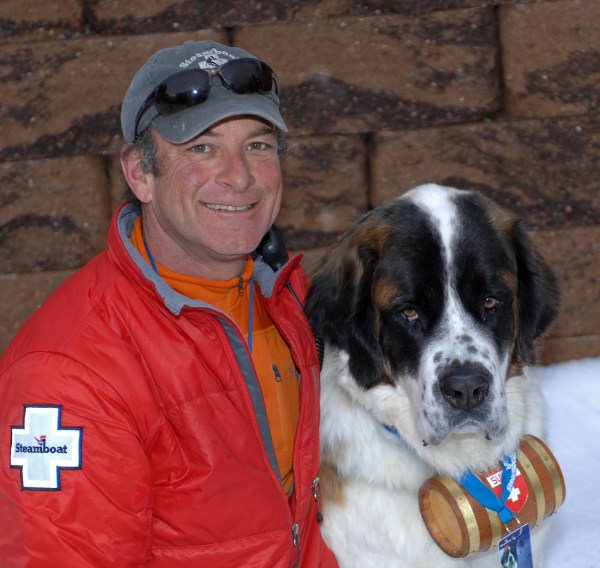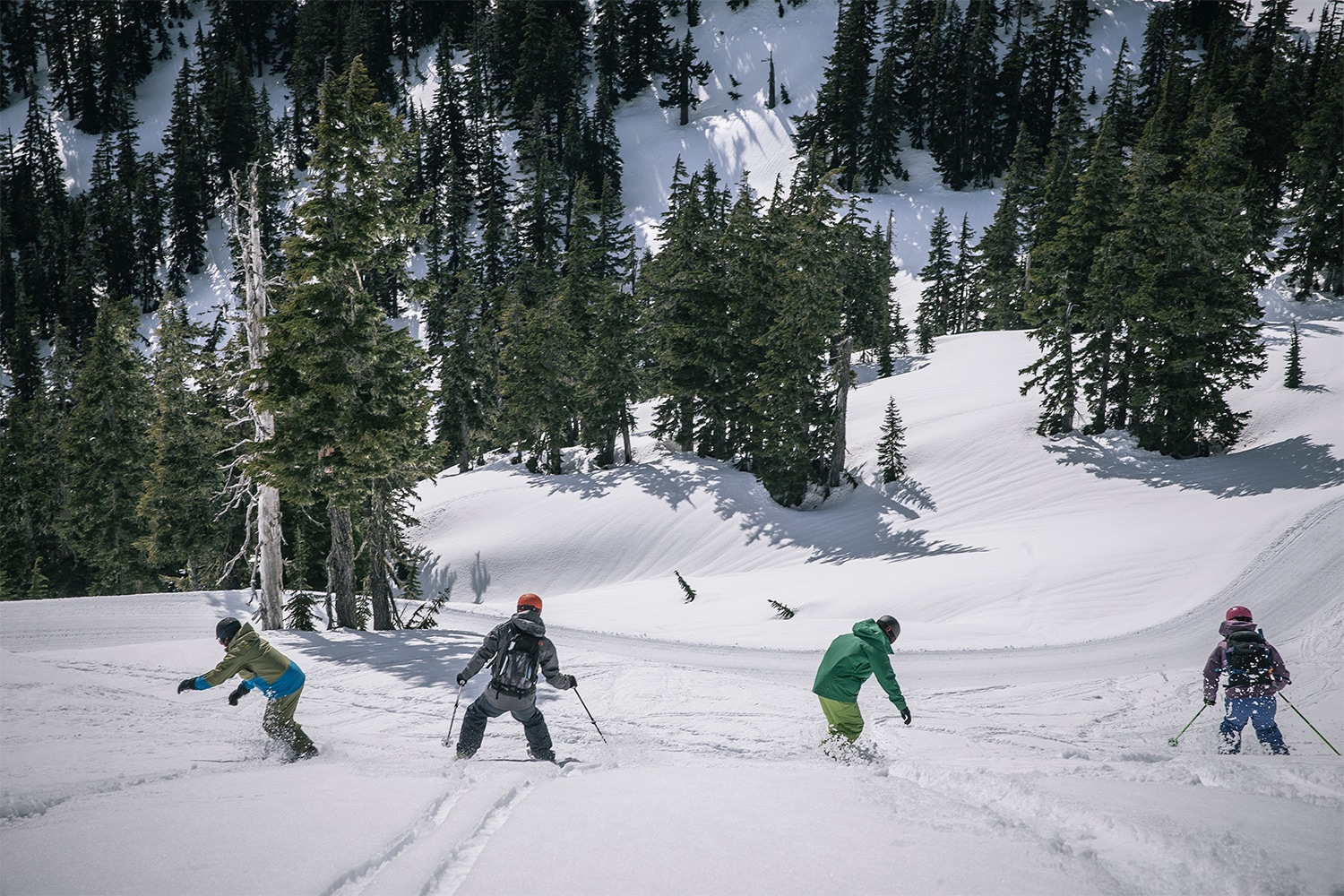How do you prevent yourself from coming down the slope on a ski patrol toboggan? Pretend you’re driving a car in traffic.
Talking about safety can be a real buzz kill. But skiers and riders would agree that an injury-free day on the slopes is preferable to a concussion or torn ACL. So, what’s the key to helping avoid unpleasant mountain mishaps? It’s that commonsense list of rules posted at the bottom of lifts and printed on napkins and trail maps at ski resorts across the country: the Skier Responsibility Code.
Be honest. Have you ever actually read it?
Defensive Skiing/Riding
“I think that some of our friends who are newer to the sport might not be as dialed in to the Skier Responsibility Code and their obligation to always stop where people can see you,” said Duncan Draper, long-time ski patrol supervisor at Colorado’s Steamboat Ski Resort in a phone interview. Draper believes that the key to mountain safety is to approach skiing or riding the way you would approach driving a car.

“Make sure you look up the hill before you pull out onto the mountain,” he said. “We should think of it like defensive driving/defensive skiing. Keep your head on a swivel…look around. Be aware of your environment, what’s around you, the changing conditions.”
Just like it’s your fault on the road if you rear-end someone, it’s your job to avoid people and obstacles downhill of you. “A lot of times we get people who say they were cut off or someone came around and cut in front of them,” said Draper. But from a ski patrol perspective, the downhill skier has the right-of-way.
Michaela Shiffrin, Olympic gold medalist and gold medalist at the 2015 FIS World Skiing Championships in slalom, is known for her high speeds on the mountain. But safety is still a huge concern for her, especially when skiing her home mountains, Vail and Beaver Creek.
“I can’t get much out of freeskiing anymore unless I’m going fast, but I have to be aware of everyone else. You’re not in control of the people around you,” she told me in a recent interview in Avon, Colorado. “Getting hit by a skier is very close to being hit by a car. I’ve been hit. It hurts.”
New to the Sport? Take a Lesson.
Ski patrol supervisor Draper recommends taking a lesson. Many ski areas offer special introductory pricing for beginners, so they can learn how to properly turn and stop. “When people are skiing or riding on the mountain in a manner that’s not conducive to a safe experience, we try to point them in the direction of a slope that might be better for them or more conducive to their level or ability. Or we send them down to the ski school.”
Beware of Common Injuries
Some injuries are more prevalent during particular snow conditions. “If we’re in a deep powder cycle, we see more knee issues in skiers, but not as much in snowboarders,” said Draper. “If the snow is hard—spring conditions where it freezes at night and thaws in the afternoon—we see our snowboarding friends hurting their wrists and people hitting their heads.”
But Draper asserts that the ski patrol spends the majority of its time dealing with people who are either in over their heads or tired. Don’t overestimate your energy after sitting down to lunch after skiing hard all morning. It’s common knowledge that most injuries happen at the end of the day when a skier or rider is fatigued.
A Word About Helmets
“Helmets are crucial,” said Shiffrin. “Wear them.” Although there may have been mixed research in the past few years about helmets, according to statistics from the National Ski Area Association (NSAA), helmets have proven to reduce the incidence of head injuries by 30 percent to 50 percent. However, an increase in helmet use in skiing and riding has not led to a decrease in fatalities from ski accidents. Ultimately, skiing and riding in control is one of the greatest factors in decreasing fatalities on the slopes.
Danger in the Trees: NARSID and SIS
If you ski trees or the backcountry, it’s imperative that you familiarize yourself with the dangers of NARSID (Non-Avalanche Related Snow Immersion Death) or SIS (Snow Immersion Suffocation). I had a terrifying experience with SIS about ten years ago at a ski area in Switzerland. I was riding a two-person T-bar lift (alone) up a steep slope, when I lost my balance and was catapulted off into a deep tree well. There was no one else riding the lift and no one on the slope. My ski tips were face down in several feet of powder, and I was immobilized; the only way I could breathe was to keep my head up above the snow. I cried for help, but there was no to come to my rescue. Finally, after calming myself down, I was able to reach one of my poles and release the bindings of my skis and gently roll over on my back.
As you can imagine, SIS is especially dangerous for snowboarders who fall headfirst into powder and cannot release their bindings.
“Every instance [of SIS] I’ve ever seen is avoidable,” said Draper. “Always ski with a friend. Keep that person within eyeshot the whole time, so in case they do fall or get in a bad situation you can get back up the hill and get to them.”
It’s also a good idea to save the ski patrol’s phone number in your phone in case of an emergency during inbound skiing.
Making a Plan if You Get Separated from Your Group
Draper also believes that making a plan is critical to slope safety. “Since the advent of cellphones, we don’t always make a plan—where we’re going to meet if we get lost,” he said. However, cellphones get misplaced, run out of juice or simply lose their signal. Families and friends should have a backup plan on where to meet if they get separated.
If your children don’t have cellphones, this is even more important. Talk to your child about which lift or restaurant will be your meeting place if you get separated on the mountain.
Ultimately, skiing has grown much safer over the past 40 years. According to estimates there are only about two injuries per 1,000 skiers. If you review the Skier Responsibility Code and stay in control, your chances of a perfect ski day increase.
Safety first. Freshies second.
